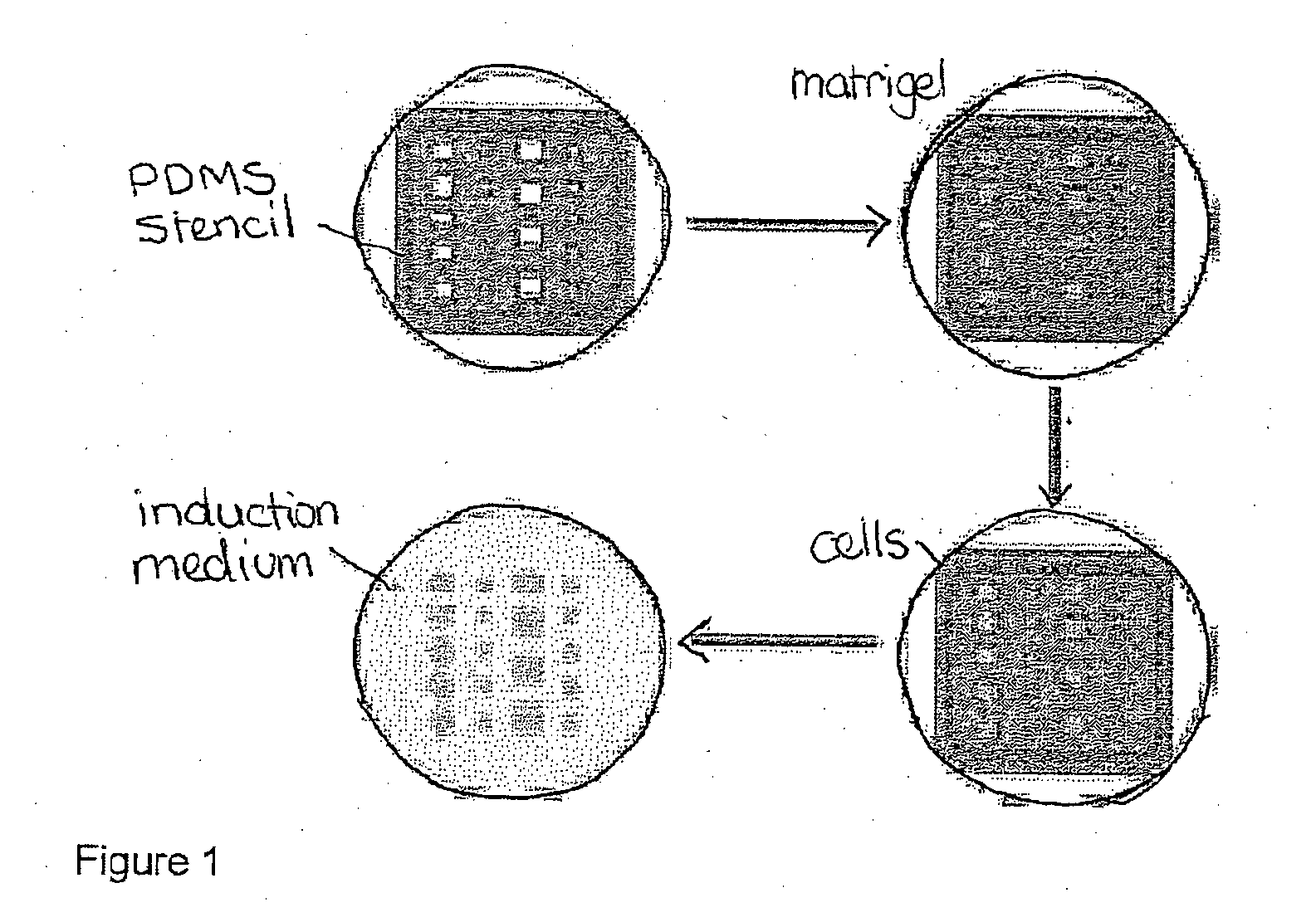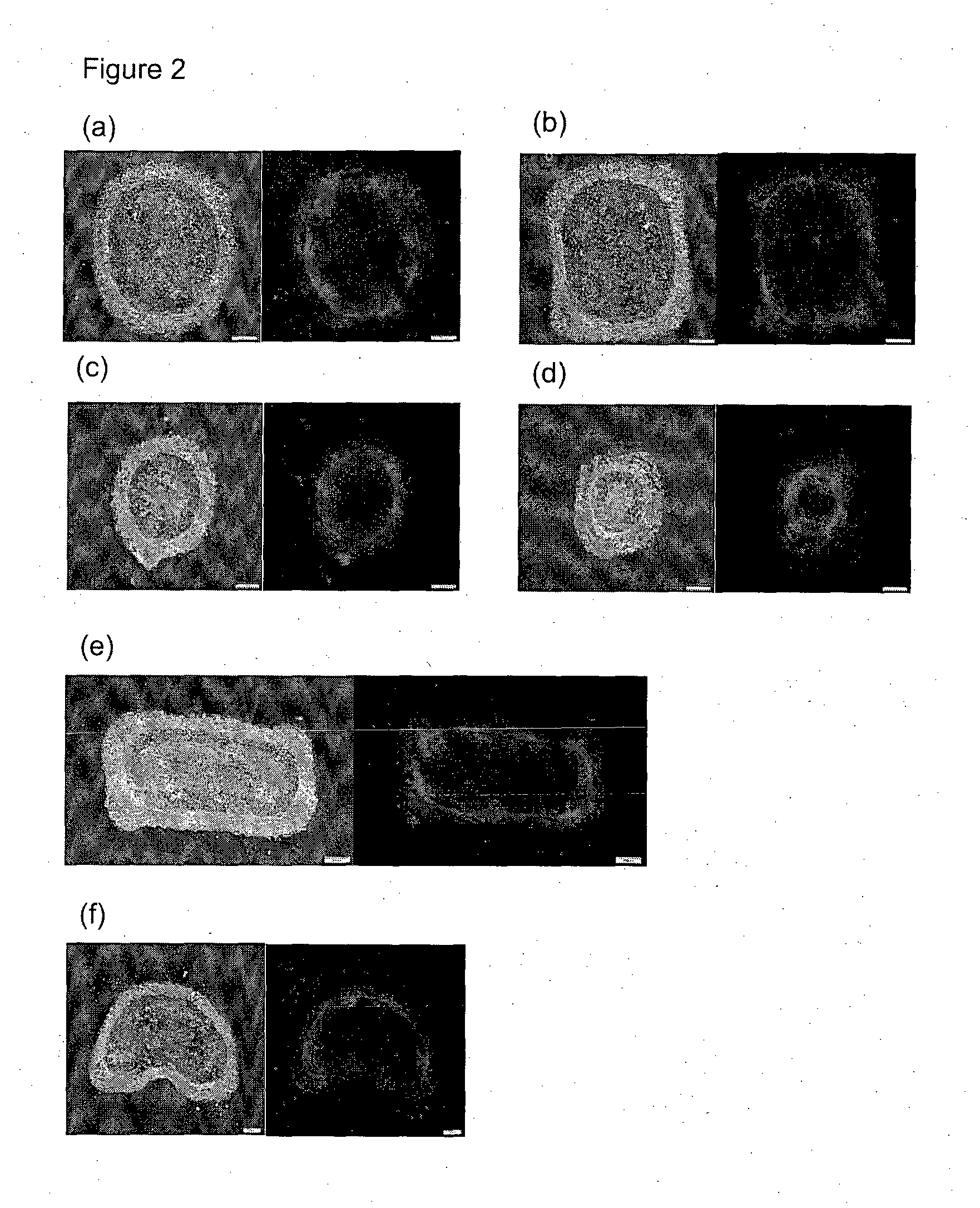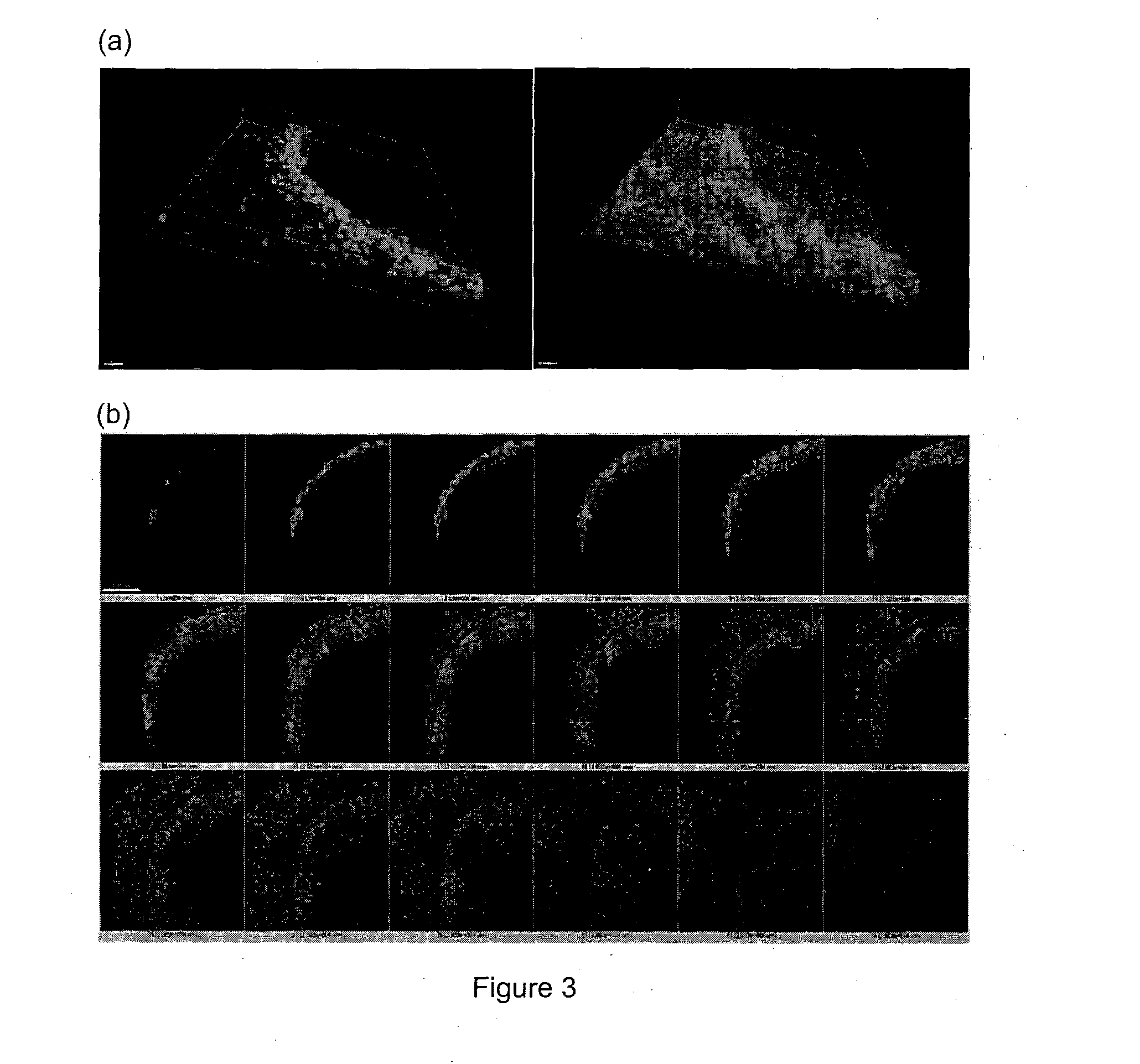Method and system for in vitro developmental toxicity testing
a technology of in vitro development and toxicity testing, applied in the field of method and system for developmental toxicity testing, can solve the problems of limited testing of developmental toxicity on animals, false negatives with devastating consequences, and still unsatisfactory drug testing application
- Summary
- Abstract
- Description
- Claims
- Application Information
AI Technical Summary
Benefits of technology
Problems solved by technology
Method used
Image
Examples
example
Materials & Methods
[0062]Cell Patterning
[0063]In order to generate gradients of mechanical stress, circle or square shapes of Matrigel matrix with two different sizes (785000 μm2 or 196250 μm2) were designed using AutoCAD software. Then polydimethylsiloxane (PDMS) stencils were fabricated by using a laser-cutter (Universal Laser System) to cut the designated shape patterns on a 127 μm thick PDMS sheet (Specialty Silicone Products Inc.) and then bonding it to a laser-cut, 2 mm thick PDMS gasket. For cell patterning, the PDMS stencil was first sealed into a 60 mm petri dish by adding 200 μl 70% ethanol and dried in the tissue culture hood, then Matrigel™ (BD Biosciences) matrix was coated by at least hour incubation with the Matrigel™ solution (FIG. 1). Thereafter cells were seeded at a density of 4 million cells / ml. After 1 hour incubation for cell attachment, the stencil and excess unattached cells were removed. The surface was then passivated with 0.5% pluronic acid for 10 mins bef...
PUM
| Property | Measurement | Unit |
|---|---|---|
| time | aaaaa | aaaaa |
| area | aaaaa | aaaaa |
| concentration | aaaaa | aaaaa |
Abstract
Description
Claims
Application Information
 Login to View More
Login to View More - R&D
- Intellectual Property
- Life Sciences
- Materials
- Tech Scout
- Unparalleled Data Quality
- Higher Quality Content
- 60% Fewer Hallucinations
Browse by: Latest US Patents, China's latest patents, Technical Efficacy Thesaurus, Application Domain, Technology Topic, Popular Technical Reports.
© 2025 PatSnap. All rights reserved.Legal|Privacy policy|Modern Slavery Act Transparency Statement|Sitemap|About US| Contact US: help@patsnap.com



